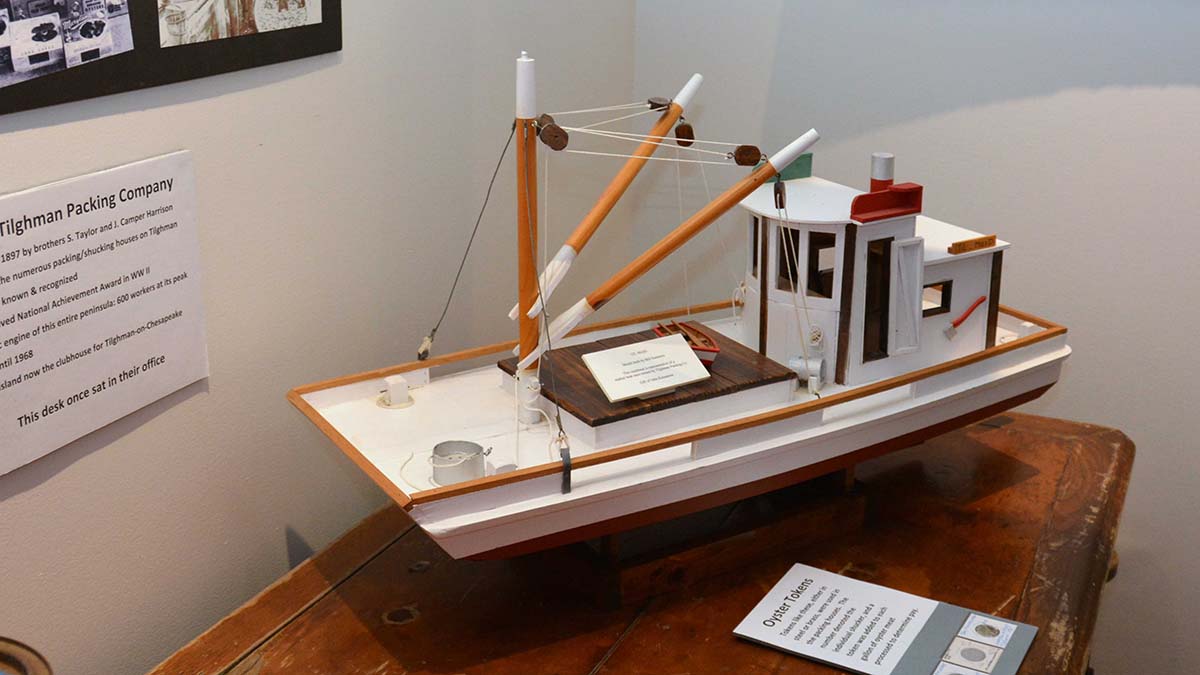Test your knowledge of Chesapeake Bay. Did you know that a German U-boat lies at the bottom of the estuary? That the Bay’s waters shelter a sunken battleship and a moldering fleet of over one hundred abandoned vessels? That during World War II the Annapolis Yacht Yard was the world’s third-largest manufacturer of PT boats and a Baltimore shipyard employed 50,000 workers and launched the world’s first Liberty Ship?
Most people familiar with the Chesapeake have heard about the storied oyster wars, but they may not realize that the Bay has been a hotbed of piracy — even Blackbeard plied these waters. And they might not know that giant crocodiles and sixty-foot megalodon sharks once terrorized the region, or that 35 million years ago a massive meteorite slammed into coastal waters near present-day Cape Charles, Virginia, snuffing out marine life for miles around.
Chesapeake Bay is the nation’s largest estuary and the third largest in the world. Stretching over two hundred miles from the Susquehanna River to its Atlantic Ocean outlet, it comprises 4,479 square miles, contains 18 trillion gallons of water, and is bordered by nearly twelve thousand miles of shoreline. Mariners have plied its waters for thousands of years, in watercraft ranging from open canoes to thousand-foot cargo ships.
A water body so vast, varied, and ancient gives up its secrets begrudgingly, but what we do know is remarkably accessible to the public. Many fine maritime museums feature fascinating exhibits and collections covering virtually every aspect of Chesapeake Bay.
Here is a sampling:
Harvesting the sea
Are you interested in the Bay’s seafood enterprise, from pre-Colonial time, through the era of skipjacks and oyster wars, to modern efforts to farm the Bay’s waters? The Chesapeake Bay Maritime Museum in St. Michael’s, Maryland and the Annapolis Maritime Museum and Park are great places to start. Elsewhere in Maryland, the Upper Bay Museum in North East, the Smith Island Cultural Center, the Waterman’s Museum in Rock Hall, and the Tilghman Watermen’s Museum offer fascinating information about the Bay’s fishing heritage.
Marine life then and now
Want to know more about the ancient creatures that cruised the waters around present-day Chesapeake Bay? Check out the Calvert Marine Museum in Solomons, Maryland where you’ll be greeted by a skeletal restoration of an extinct giant white shark before strolling by dioramas of the prehistoric Miocene world. If contemporary marine life piques your interest, you can view thousands of species of aquatic animals and plants in their watery habitats at the world-famous National Aquarium in Baltimore.
Watercraft and boat building
Few subjects better represent the Bay’s rich heritage than boat building. Several area museums celebrate this history. The Chesapeake Bay Maritime Museum includes a working shipyard where you can watch shipwrights and apprentices restoring traditional vessels. The Upper Bay Museum hosts a boat building school and the Havre de Grace Maritime Museum in Maryland has a working boat shop. Also well worth a visit: The Skipjack Heritage Museum, in Chance, Maryland and the Richardson Maritime Museum in Cambridge, Maryland.
Naval history
The Bay area boasts two outstanding museums that feature the history of the U.S. Navy. The comprehensive collections, exhibits, and interactive displays of the U.S. Naval Academy Museum in Annapolis are especially impressive. The Mariners’ Museum in Newport News, Virginia includes the USS Monitor Center, a stunning presentation of the history and salvaged remains of the famous Civil War ironclad.
Native American and Colonial history
The Chesapeake Bay Maritime Museum covers the entire sweep of Chesapeake Bay history. The Sultana Education Foundation in Chestertown, Maryland has a full-scale replica of a historically important mid-18th century Royal Navy schooner. The St. Clement’s Island Museum, located near the first colonial landing on the Potomac River’s east shore, focuses on the Bay region’s pre-Colonial English history.
Waterfowl
Several museums highlight the Bay’s rich heritage of duck hunting and decoy carving. Curious? Plan trips to the Chesapeake Bay Maritime Museum, the Havre de Grace Decoy Museum, the Upper Bay Museum, and the Ward Museum of Wildfowl Art at Salisbury University.
During the holiday season, when outdoor activities may be limited, a trip to one of these museums can be an immensely satisfying family activity. Visitors will find that there is something for everyone, of every age.
So, what are you waiting for? Choose an area of interest, grab family and friends, and immerse yourself in the natural and human history of Chesapeake Bay. And have fun!
Henry (“Hank”) Parker is a scientist and writer who previously lived in Annapolis but now lives in Vermont.

Let's keep in touch!
Keep up with the latest OutLook by the Bay information by signing up here. We promise not to waste your time.


